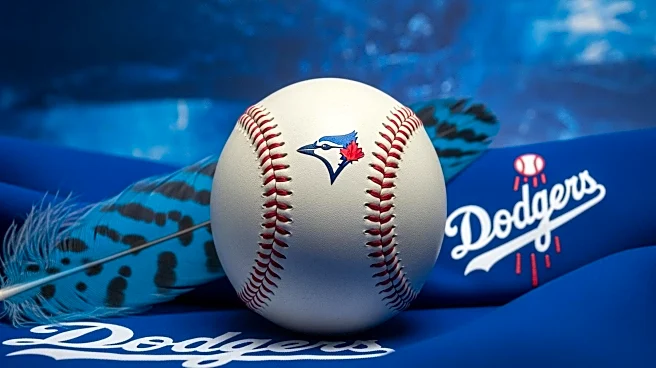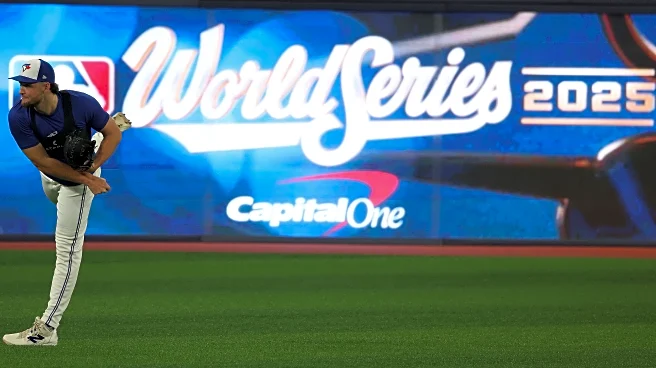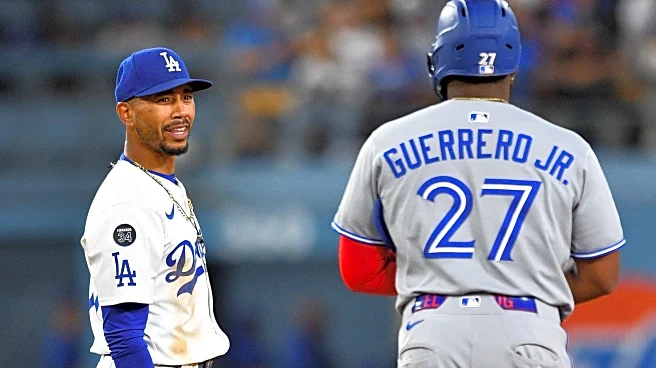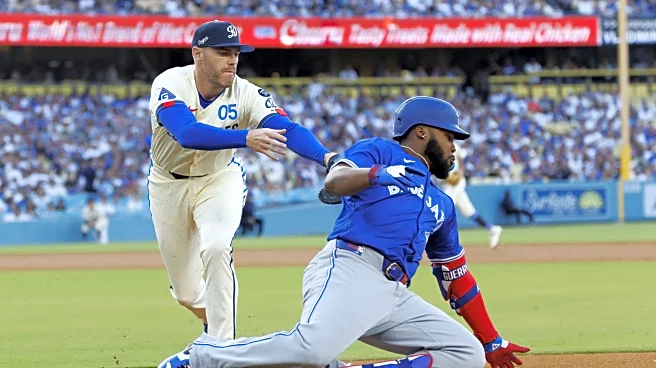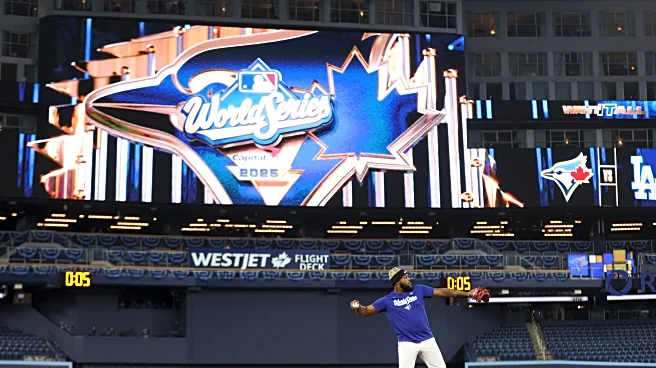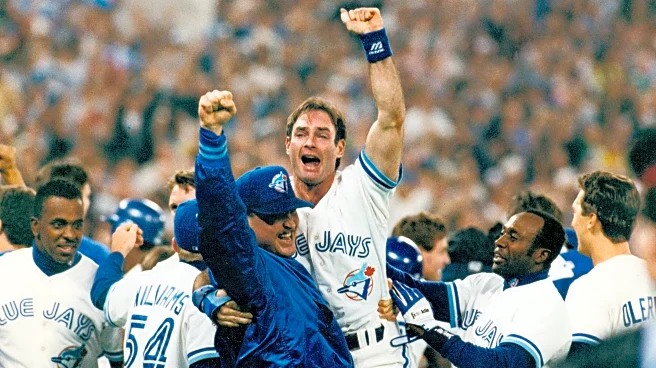What's Happening?
The 2025 World Series between the Toronto Blue Jays and the Los Angeles Dodgers is set to be a historic showcase of the splitter pitch, a once-rare technique in Major League Baseball. This postseason has
seen an unprecedented rise in the use of splitters, with both teams heavily relying on this pitch to gain an edge. Key pitchers like Kevin Gausman and Trey Yesavage from the Blue Jays, and Shohei Ohtani and Yoshinobu Yamamoto from the Dodgers, are leading this trend. The Blue Jays have thrown 16% of their pitches as splitters this postseason, while the Dodgers have used them 9% of the time. This strategic focus on splitters has resulted in a significant increase in strikeouts and a decrease in batting averages against these pitches.
Why It's Important?
The increased use of the splitter in the 2025 World Series highlights a strategic shift in baseball, where pitchers are prioritizing secondary pitches over traditional fastballs. This change is significant as it reflects broader trends in the sport towards maximizing strikeouts and minimizing hitter success. For the Blue Jays and Dodgers, this strategy has been crucial in their postseason success, potentially setting a new standard for pitching strategies in future seasons. The outcome of the World Series could influence other teams to adopt similar approaches, impacting player training and recruitment strategies across the league.
What's Next?
As the World Series progresses, the effectiveness of the splitter will be closely watched. If the Blue Jays and Dodgers continue to succeed with this pitch, it could lead to a reevaluation of pitching techniques across MLB. Teams may invest more in developing pitchers who can master the splitter, and hitters may need to adapt their training to better handle this challenging pitch. The results of this series could also influence the offseason strategies of other teams, as they look to replicate the success of the Blue Jays and Dodgers.
Beyond the Headlines
The prominence of the splitter in the 2025 World Series also raises questions about the evolution of baseball as a sport. As teams increasingly rely on advanced analytics to guide their strategies, the traditional aspects of the game, such as fastball dominance, are being challenged. This shift could lead to a more dynamic and unpredictable style of play, potentially attracting new fans and altering the cultural landscape of baseball. Additionally, the focus on specialized pitches like the splitter may impact player development programs, emphasizing the need for versatility and adaptability in future generations of players.
